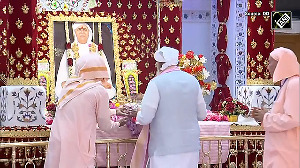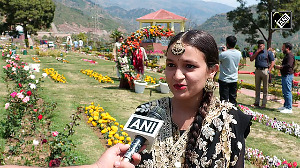 Indian animation and gaming training institutes are gearing to scale up their businesses and open up new avenues for professionals who are passionate about animation and gaming technologies.
Indian animation and gaming training institutes are gearing to scale up their businesses and open up new avenues for professionals who are passionate about animation and gaming technologies.
Hyderabad-based C G Mantra Digital Media, which recently incorporated a VFX (special effects) suite at its Delhi facility with an investment of Rs 5 crore (Rs 50 million), is planning to set up three more of such campuses next year in other metros.
Similarly, DQ Entertainment, which already is a knowledge-sharing partner with the West Bengal, Madhya Pradesh and Rajasthan governments, is holding talks with other state governments, while Arena Animation, which has so far trained 250,000 students from across 165 centres in India and 35 centres abroad, is planning to set up 30 more centres in the next 12-18 months.
"The VFX industry is expected to grow from the current $67 million to $173 million in three years. With rapid increase in animation and VFX component in live action movies, the actual growth may easily go far beyond these numbers. At C G Mantra, our objective is to create top-class studio facilities for education that caters to about 200 students in each campus," says ABRP Reddy, founder and chief executive of CG Mantra, and advisor to Nasscom's animation and gaming forum (NAGFO).
"We plan to expand to Tier-II and Tier-III cities in India and also internationally. We would like to focus on Latin America and African markets as well as countries like Malaysia and Philippines," concurs Anuj Kacker, global head of Arena Animation, the animation and multimedia training business of Aptech Limited.
Reddy, however, feels a significant growth from the Indian animation industry may come from domestic television and film industry, which is of Rs 40,000 crore (Rs 400 billion) already.
"From Nasscom's side, we are working with the Union information and broadcasting ministry to impress upon them to give guidelines to electronic media to encourage domestic content. We will also take up with the finance ministry the idea to create policies to encourage domestic market consumption and give a level-playing field with export markets," he says.
Nasscom has set-up a core committee "Board for Animation and Gaming Standards" with experts drawn from the practicing industry to define minimum standards in the training industry, which include hierarchy of certifications, entry and exit tests for aspiring youth. "To sum up, we are looking at a system of accreditation for animation education," Reddy adds.
For one, international game publishers are looking at India for game development outsourcing, game production, game art and design. Two, games development and creating animated characters as a career option are not only fun-filled and creative tasks but also provide attractive global employment prospects.
And finally, as a full-time career option, the average salary is estimated to be anywhere between Rs 1.2 lakh and Rs 7 lakh a year (depending on the different profiles an individual chooses).
"Animation and gaming offers a different avenue for students to choose instead of the straight-jacketed course offered. The Indian animation industry has steadily evolved and the industry is increasingly allocating budgets for the development of production content. Besides, established film production houses are foraying into the animation entertainment industry. Now, with international developers setting up local development centres, the scope of opportunities is simply vast," says Tapaas Chakravarti, chairman and chief executive of DQ Entertainment, which runs the DQ School of Visual Arts in Hyderabad and Kolkata training 270 students.
A recent Nasscom report reveals that despite the impressive growth forecasts, the Indian animation and gaming industry will account for less than two per cent of the worldwide market in 2010.
Nasscom predicts animation and gaming jobs to double to 10,700 in India by 2012. India, according to analysts, has the potential to grow its animation industry to around $1 billion by 2010, but will remain restricted to around $870 million due to a looming demand-supply gap in the area of employable human resources.
A similar situation exists in the gaming segment as well, which has the potential to achieve revenues of $732 million by 2010, but is expected to touch only $424 million by that period, owing to the paucity of skilled manpower.
"Obviously, a much larger opportunity exists beyond what is currently being envisaged and the potential remains high. India can participate in a more significant way in the global animation market provided the country has built up requisite manpower, with the relevant expertise to fuel its growth," says Kacker.
Cost advantage is the most important and attractive value proposition for India as an animation and gaming content development destination, feels Kacker. "A US-based animator can cost about $125 an hour, while it is $25 in India. For instance, Kerala-based Toonz Animation offers animation at 25 per cent to 40 per cent lower rates than other Asian studios and much lower than those of American studios," he adds. The total cost for making a full-length animated film in the US is estimated to be $100-275 million. In India, it can be made for $15 million to $25 million.
All these factors point to the fact that the animation-outsourced industry is set to grow. Apart from natural cost advantage enjoyed by India, notes Kacker, international companies look at India and Indian talent because it is one of the few countries which offer cultural and language synergies as well as a large enough pool from which to select talent in large numbers.










 © 2025
© 2025